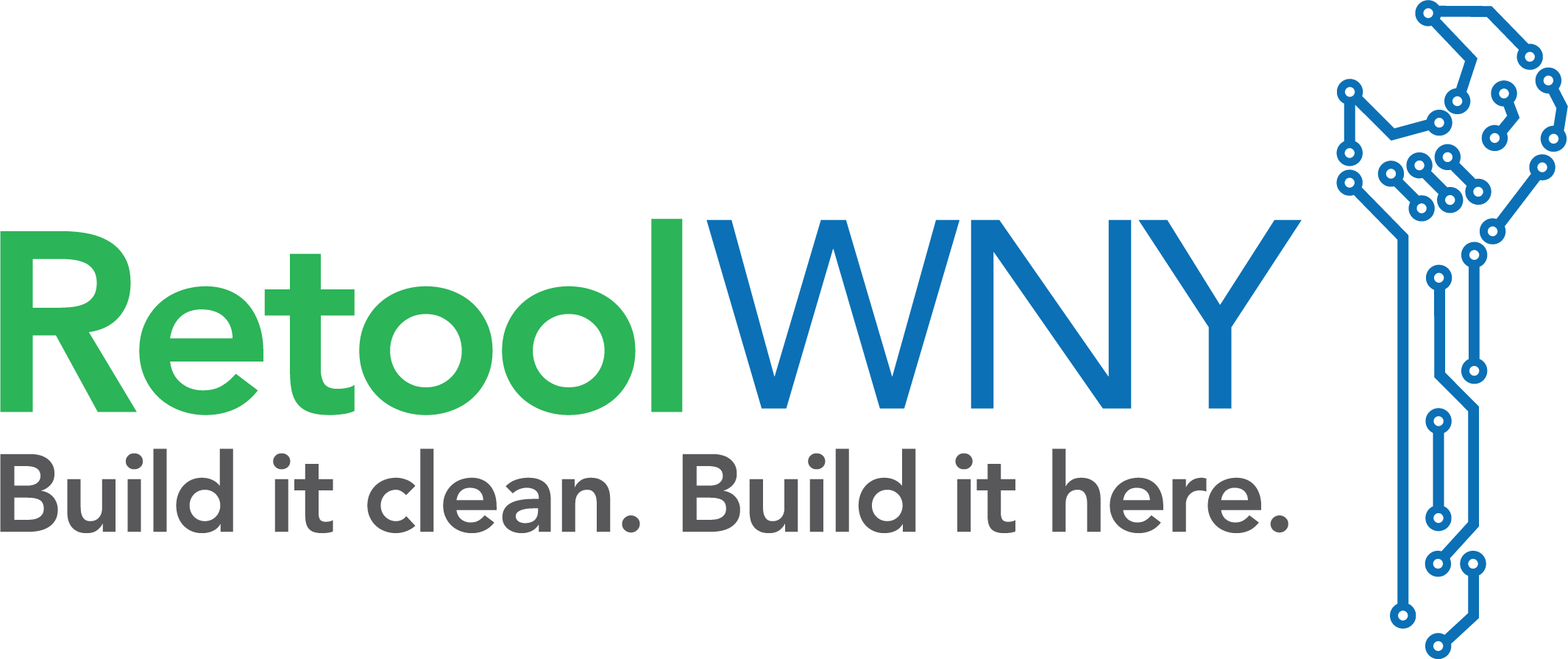WNY is growing businesses and a workforce together, and it is making the community stronger....
Manufacturing Site Selection Criteria: What to Know

Manufacturing construction in 2023 was booming, to the tune of $196 billion. This is a significant increase from the $109 billion spent in 2022 and the St. Louis Branch of the Federal Reserve reports the spending looks to make history as a 20-year high.
Part of that spending can be attributed to efforts to onshore semiconductors, making the US a more serious contender in the component industry. Meanwhile, growth in the renewable energy industries also can take credit for the significant increase in manufacturing spending.
Legislation aiding the growth of US manufacturing includes:
- The CHIPS and Science Act, part of the US Infrastructure Act, was passed in 2022 and encourages businesses to invest in research, development, and manufacturing activities. This type of investment can help bring high-tech companies to a given region or state and create jobs in those areas. This act provides financial incentives that could benefit companies looking to expand their operations into the US, especially in the renewable energy industries such as solar, wind, and electric vehicles.
- The Inflation Reduction Act is another tax incentive program, which was also passed in 2022 and encourages businesses and individuals to invest in research and development activities. By offering incentives such as discounts on taxes, this act encourages companies to focus on new projects that may lead to growth and development. Through these incentives, the act helps to keep public spending from escalating too quickly, while also attracting businesses that are looking for new areas of investment. By stimulating private sector economic growth through both fiscal and monetary policy, the Inflation Reduction Act helps discourage inflation over time.
Construction is One Thing, Experienced Workers Another
With new construction comes new jobs, and manufacturers have a very specific list of qualities they seek in employees. However, those employees are looking for certain things from their employer these days as well. With that in mind, manufacturers seeking out a new location for a facility have to balance the needs of the facility with desirable qualities in the nearby communities.
Manufacturers look to locate in areas where there is a ready and able workforce and a commitment to training. The WNY and Southern Tier regions have both. Chautauqua County has one of the highest percentages of workers employed in manufacturing and a long history of that sector providing stability in our economy.

We have a training eco-system that is both comprehensive and flexible and includes our BOCES P-TECH program; Jamestown Community College’s workforce development division that provides regular and customized training in response to manufacturer and community needs; the Builders Exchange of the Southern Tier and the IBEW Local that provide apprenticeship opportunities, and partnerships with Buffalo Manufacturing Works (BMW/EWI) and the Manufacturers Association of the Southern Tier (MAST) that target specific training needs related to technology enhancements in manufacturing.
In addition, there are growing advanced manufacturing programs in regional schools, like Chautauqua Lake Central School where the high school has partnered with regional manufacturers to sponsor a hands-on lab and STEM-based classes.
First, let’s take a look at the most common factors that business owners across manufacturing seek for new facility locations:
- Resources: Affordable energy is a big one for facilities that need significant amounts of electricity for production purposes. The same can be said for water availability.
- Infrastructure: Transporting goods to storage facilities or to customers can get expensive. Having easy access to railroads or major highways is a big plus for potential facility sites.
- Tech-skill savvy workers with manufacturing-specific skills
- Degree, apprenticeship programs/partnerships or workforce development programs with local schools/universities to create a continuous source of workers
- Local/regional ecosystem: Established businesses that can become reliable suppliers would be an asset in areas with available land. For example, automotive manufacturers who can pivot to create parts for solar panels would be a draw for solar panel manufacturers seeking a new site.
Due to compressed schedules for manufacturers who are looking to expand production capabilities, it is critical to have available shovel-ready sites for new construction as well as already-built facilities that are move-in ready or need minimal renovations to set up production lines. Our regional leaders are committed to assisting businesses in both scenarios.
The Chautauqua County Industrial Development Agency (CCIDA) is taking the lead on the development of shovel-ready sites, along with the state’s funding for fast-tracking these properties, and some available former industrial/manufacturing facilities are being heavily marketed.
One recent success was the purchase of the former Acu-Rite facility with 145,000 sq. ft of manufacturing and office space for the new Electrovaya manufacturing facility. Electrovaya is based in nearby Ontario, Canada, and they are ramping up for assembly and production in the greater Jamestown (NY) area this year.
There are also environmental necessities for manufacturing facility locations, including:
- Climate (especially for temperature-sensitive materials)
- Policy incentives: affordable land, tax breaks, economic factors that benefit manufacturers
- Potential facilities to refurbish
An important consideration for manufacturers is easy access to supply chain companies and proximity to large markets for the distribution and sale of their products. The WNY and Southern Tier regions can provide both.
There are a large number of custom tool and die, metal fabrication, and roll form shops that provide parts and components for small, medium, and large manufacturers. Our location is within a three-hour drive of over 14 million potential customers in major metropolitan areas and within a seven-hour drive of most of the northeastern US. We have easy access to interstate highways, including I-90, I-86, and I-79.

With work/life balance more of a priority for today’s workers, quality of life in the area is important too. Therefore, manufacturers have to step away from the facility needs and consider the best options for attracting workers to the location as well, including affordable residential opportunities and quality education systems.
This also includes creating a work environment that encourages time off. According to research from the American Psychological Association, only 1 in 4 workers in industrial careers feel their employer maintains an environment that encourages employees to take time off. Meanwhile, almost 2 in 4 (48%) workers in office workplaces feel this way.
Shift 2.0: Meeting Manufacturers Where They Are
Manufacturers relocating to areas like Western New York can benefit from established programs working to assist manufacturing facilities with workforce gaps and technological deficits.
Buffalo Manufacturing Works - operated by EWI, oversees the Shift 2.0 program, which is federally funded by a Build Back Better Regional Challenge grant from the Economic Development Administration with additional funding from Empire State Development, and assists small to medium manufacturers (fewer than 500 employees) in Chautauqua, Cattaraugus, Niagara, Erie, and Allegany counties with the implementation of available technologies to optimize their productivity.
Shift 2.0 is an established network and a community of support for manufacturers who are looking to integrate new technologies into their operations. For example, investing in cobots, especially as prices are coming down, can increase productivity and efficiency, while addressing skilled trade labor sources. Whether these jobs are time-consuming, repetitive, or dirty jobs no one lines up to handle, adding technology like collaborative robots helps with employee retention and productivity.
A team of engineers visits the facility to evaluate solutions that will best fit your company’s needs. This can include the automation of simple tasks that currently require a human to complete but would be better served via available technology.
Established businesses benefit from an initial business assessment, training opportunities, and the installation of applicable technology where feasible. The business assessment can also be beneficial to manufacturers who are in the preliminary stages of setup and have yet to begin operations.
The possibility of working with Buffalo Manufacturing Works on commercial projects outside the Shift 2.0 scope is ideal for manufacturers who have more than 500 employees.
Navigating Manufacturing Site Selection Criteria | Taking Action
With construction funds flowing and society's perspective adjusting to meet the new needs of both manufacturing and the workers who manage the production line, now is the time to start incorporating programs that can help with workforce development. Likewise, researching the right areas for relocation or expansion can mean the difference in your long-term success.
Manufacturers rely on reliable and resilient utilities to operate their equipment and need to work collaboratively with utility staff to make sure their overall operations are efficient and cost-effective. Now the business has to develop and execute plans to meet emerging federal and state targets for reduced greenhouse gas emissions and decarbonization.
Our region has utility leaders who help execute our focused economic development potential thanks to the availability of renewable power from the Niagara Power Project and future-focused manufacturers located here who are already participating in the clean energy/climate tech sector.
Considering WNY for Your Business?
The staff at Retool WNY can help you decide on the next steps. They also have information on funding to pursue production efforts in the renewable energy sector.






Blog comments